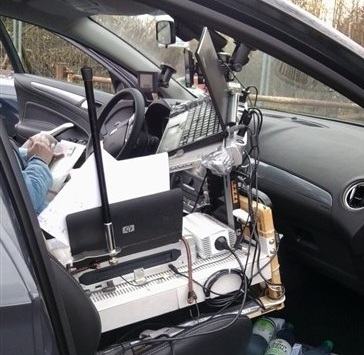Tech Trends: Is Your Workspace Pushing the Right Buttons?

Technology is shaping and influencing the way we run our lives at work, at home and everywhere in-between. It’s ingrained in everything we do and it’s developing at an incredible pace, fueled by social behavior and an insatiable appetite to have everything ‘now’. Remember when IT lessons at school felt a little alien? Not anymore. The next generation is growing up surrounded by technology, with the same appetite for knowledge and collaboration that we as business people demand today.
So the multi-million pound question – and the one that fascinates the human race – is what’s next for technology?
A recent article on Real Business by Vanessa Zainzinger unearthed some fascinating trends about technology and how it’s about to turn the way we do business on its head.
The culture of immediacy
We live in a world where we want everything yesterday. From music downloads and streaming movies to answering that annoying question, we want information at our fingertips – and the internet gives us instant gratification.
In this must-have-now culture, businesses are expected to adapt. Whether it’s a booking system with online payments or immediate customer service, clients expect immediacy. Workspace operators can tackle this in many different ways – such as checking their customer service protocols and assessing their online presence. Those with coworking or meeting spaces should have an online booking facility, and centers can assess their ‘immediacy’ by making sure their websites as user-friendly as possible – ensuring they are delivering the right information to clients quickly and accurately.
Collaboration and sharing
When bank funding is hard to come by, businesses get creative. Crowdfunding is one such solution. It’s a way of generating funds through people power and it’s all part of our sharing ethos and collaborative culture, the same concept which is made possible by social networks and which has fuelled sites such as eBay and Airbnb. If you can share goods, rooms, parking spaces and even cars, why not share money – and use it to invest in something that you believe in?
Zainzinger describes it as “rebooting” the business world, a move that was inspired by public anger at Wall Street, bank bonuses and interest rates. “It has enabled a new channel for business growth,” she says. “Now, crowdfunding lets you generate funding, build customer feedback, market and improve your product, all in one, without any significant upfront investment.”
Continuing the sharing concept in business, Spacedadi is one tool that’s actively bringing the workspace industry closer together by encouraging operators to market each other’s space. This culture of openness and sharing is expected to develop rapidly over the next few years, so operators should use it to get their workspace ‘out there’. Market it through systems like Spacedadi and you’ll not only help to sell your space and your competitors’ space (earning a commission while you’re at it), they can return the favor too – meaning you’re also sharing the marketing burden. In short, sharing helps the world go around.
The real era of mobile
Gartner predicts that in 2013, mobile devices will overtake desktop PCs as the most common web access tools. This has triggered a BYOD boom and means that barriers to market are quickly shrinking. As we have written about so much on Officing Today, it is essential that your work space website is adapted for mobile. And if users can book online through their device, you’re already ahead of the curve and ready to welcome Gen Y in their droves.
This is driving concepts such as ‘talent as a service’ – based on the idea that thanks to mobile technology, businesses can hire talent anywhere in the world. By 2020, ‘talent as a service’ is expected to impact one-third of professionals worldwide. This breaking down of geographical boundaries means that the traditional workplace will continue to change, and alternative forms of officing such as the virtual office and coworking will keep growing.
It shows that technology and workplace are intrinsically linked. It’s an exciting time for the workspace industry and equally, a time when the industry is expected to be at the forefront of alternative workplace solutions, with the tools to let mobile businesses find and book space online whenever they want. And we all know that businesses want it ‘now’. So instead of waiting until your front desk opens at 9am to accept a booking, accelerate your business by embracing technology and providing that ‘instant gratification’.
What is your business centre doing to address these demands and stay ahead of the curve?
Republished with permission by Jo Disney

 Texting while driving can be dangerous – and can even get you pulled over in some cities. But a man in Germany took remote work to a whole new level.
Texting while driving can be dangerous – and can even get you pulled over in some cities. But a man in Germany took remote work to a whole new level.